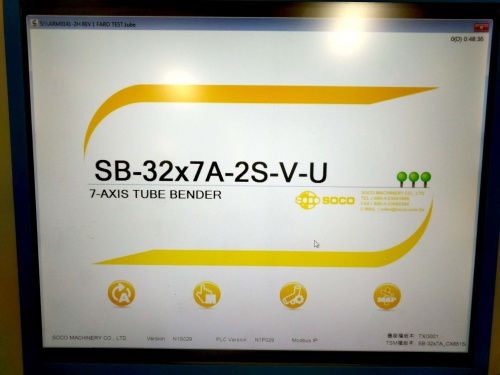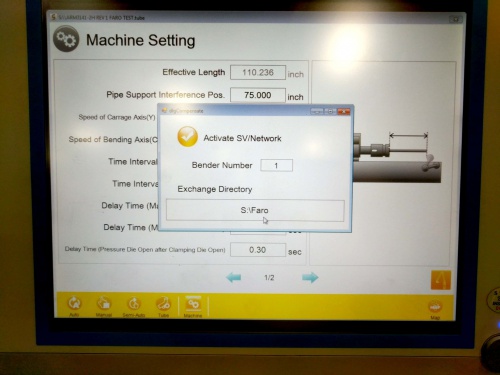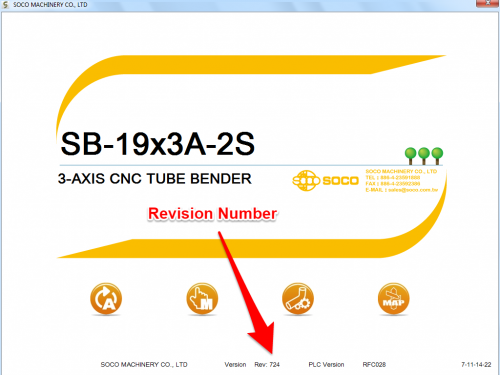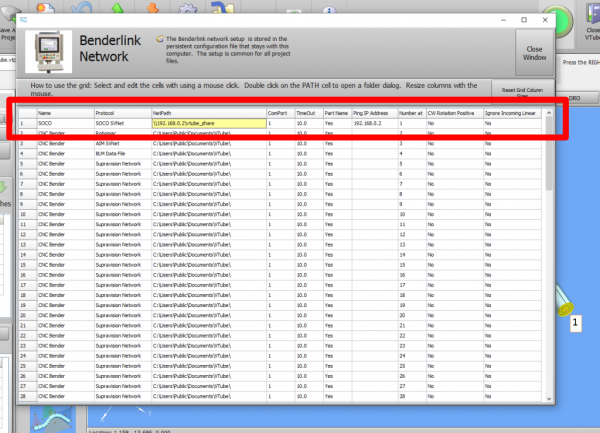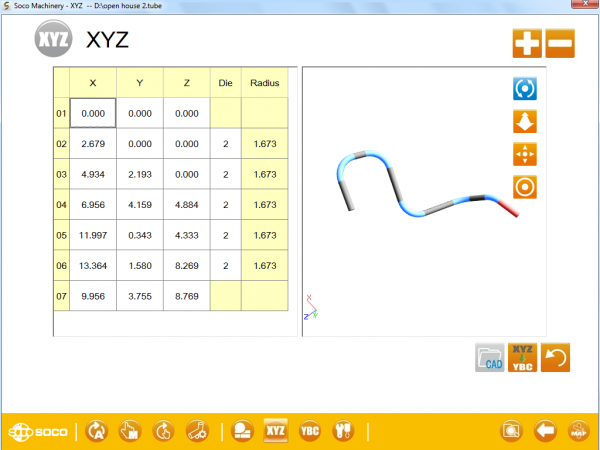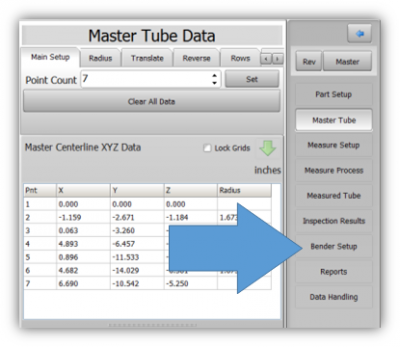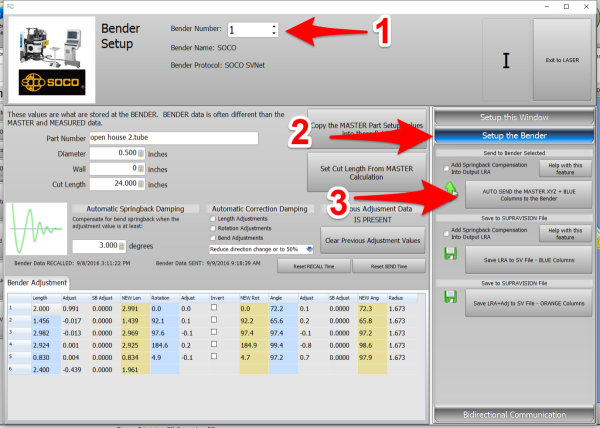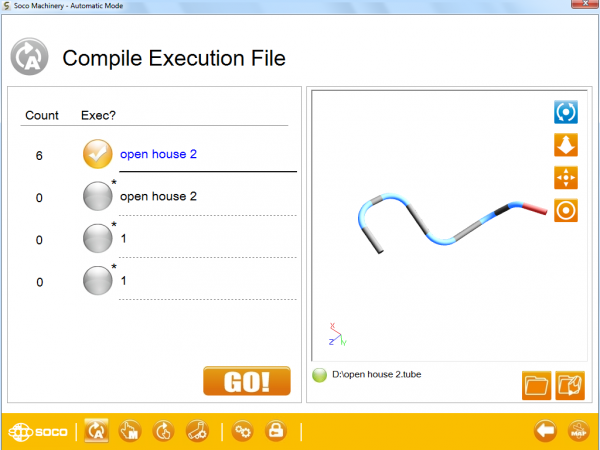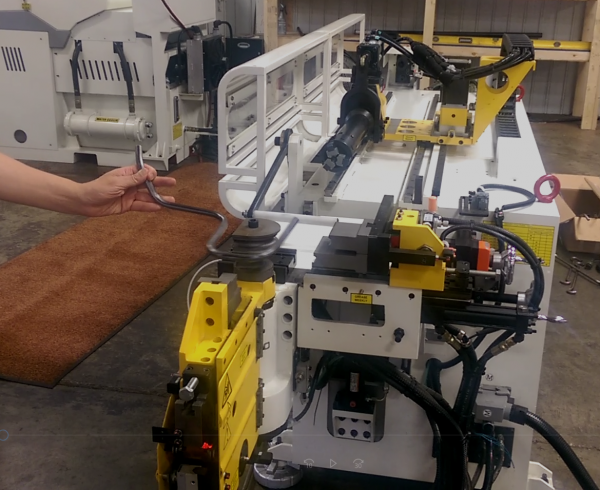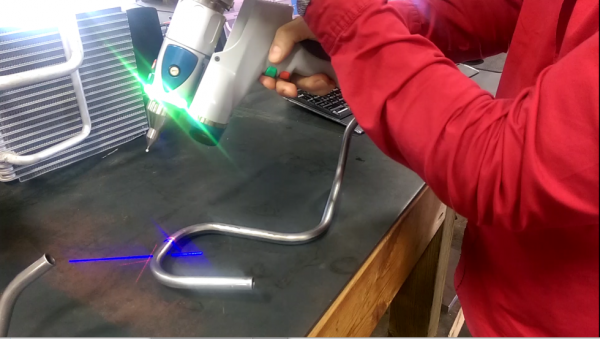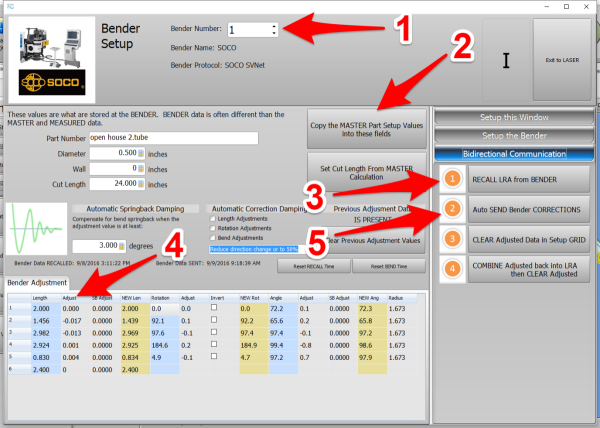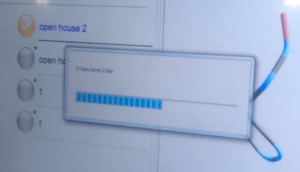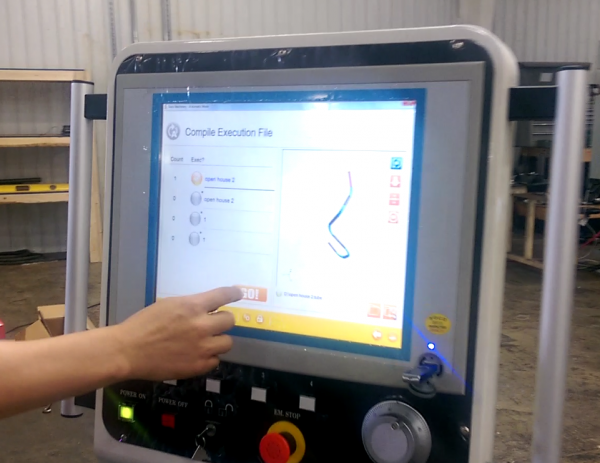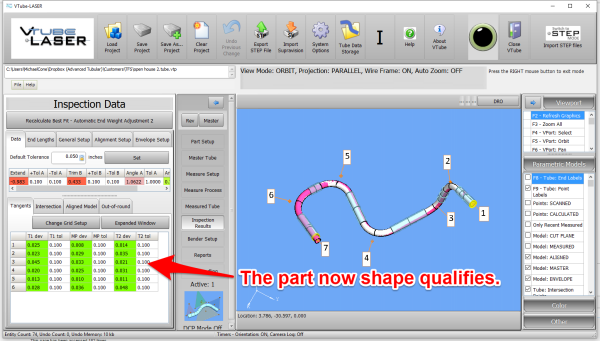Difference between revisions of "VTube Communication for SOCO"
(→SOCO SVNET Protocol (Bekhoff Type Controls)) |
(→SOCO SVNET Protocol (Beckhoff Type Controls)) |
||
| Line 36: | Line 36: | ||
<td width=300> | <td width=300> | ||
[[image:VTube-LASER to Soco XYZ.png|500px]] | [[image:VTube-LASER to Soco XYZ.png|500px]] | ||
| + | </td> | ||
| + | </tr> | ||
| + | </table> | ||
| + | |||
| + | |||
| + | ==Communications Setup at the SOCO Bender (Beckhoff Type Controls)== | ||
| + | <table> | ||
| + | <tr valign=top> | ||
| + | <td width=500> | ||
| + | |||
| + | * Connect the SOCO bender to the network using a standard Ethernet cable. Usually, SOCO computers can be accessed through the lower front of the operator station. Run the cable through the small side door on the right, and up to the computer system. The SOCO control computer will have Ethernet ports available for connection.<br><br> | ||
| + | * Setup a shared network location either in the SOCO windows control or in a network path on your network.<br><br> | ||
| + | * In the SOCO YBC screen, press the measuring center button.<br><br> | ||
| + | * Enter the shared network path in the Exchange Directory field. This path name cannot be a UNC name (like \\192.168.0.2\VTube\). It must be a path with a drive and a path that follows. If you must network to a location on the network, then map a drive letter to that location, and use the mapped drive letter in this field.<br><br> | ||
| + | * Enter the bender number. Each bender number needs to have a unique number in the network. The bender number must be 1 or higher. Don't use "0" for the bender number, because VTube requires a bender number that is at least 1.<br><br> | ||
| + | * Activate the SV/SV Network communications. Touch the checkbox field until it shows a check mark (see the image on the right).<br><br> | ||
| + | |||
| + | </td> | ||
| + | <td width=300> | ||
| + | [[image:Soco Beckhoff Startup Screen.jpg|500px]]<br><br> | ||
| + | [[image:Soco Beckhoff Main Screen Press Macihne Setting.jpg|500px]] | ||
| + | [[image:Soco Beckhoff Machine Setting Press Measuring Center Icon.jpg|500px]] | ||
| + | [[image:Soco Beckhoff Machine Setting Activate SVnetwork.jpg|500px]] | ||
</td> | </td> | ||
</tr> | </tr> | ||
Revision as of 15:03, 28 October 2019
About this Page
|
This page describes the setup and use of the VTube to SOCO communications. |
Tested and Verified Communications
|
The developers from SOCO, TFS, and Advanced Tubular have tested the features explained in this page. |
SOCO SVNET Protocol (Beckhoff Type Controls)
|
VTube-STEP can export Supravision data to Beckhoff-based SOCO benders using the SOCO SVNet protocol. |
Communications Setup at the SOCO Bender (Beckhoff Type Controls)
|
SOCO SVNET Protocol (Mitsubishi Type Controls)
|
VTube-STEP can export Supravision data to Mitsubishi-based SOCO benders using the SOCO SVNet protocol. |
Communications Setup at the SOCO Bender (Mitsubishi Type Controls)
|
Setup Benderlink at VTube-STEP or VTube-LASER for Communications with Mitsubishi-based SOCO
Entering Benderlink Setup
|
Setup the Benderlink Network Grid for the SOCO Bender
|
How to SEND MASTER XYZ Data to the Mitubishi SOCO Control from VTube-STEP
|
You can import data into VTube-STEP then send the XYZ Centerline data calculated to the SOCO bender using the VTube Bender Output menu. At the SOCO ControlAt the SOCO control, enter the SOCO XYZ Screen. With the XYZ Screen open, the SOCO control will understand that it must extract the MASTER XYZ data in the incoming data and import that into the SOCO NVS software. |
At the VTube-STEP ComputerMove to the VTube-STEP computer and follow these steps to transfer the XYZ data to the SOCO.
|
How to SEND MASTER XYZ Data to the Mitsubishi SOCO Control from VTube-LASER
|
You can also send the new XYZ Centerline data from the VTube-LASER BENDER SETUP menu to the SOCO bender using the VTube Bender Output menu. Enter the XYZ Screen At the SOCO ControlAt the SOCO control, enter the XYZ Screen. With the XYZ Screen open, the SOCO control will understand that it must extract the MASTER XYZ data in the incoming data and import that into the SOCO NVS software. |
|
Follow these steps in the VTube-LASER: Press the "BENDER SETUP button in the Navigation Pane. |
|
STEP 1 - Set the correct bender number at the top of the window. As of version 2.7, the SOCO SVNet option is available - which means you should see a SOCO bender at the top left corner of the screen.
|
How to SEND CORRECTION Data to the Mitsubishi SOCO Control from VTube-LASER
At the SOCO ControlAt the SOCO control, setup and bend the first tube through the YBC and then Compile Execution screen. |
After Bending the TubeAfter the bending cycle is complete, remove the tube from the dies. Leave the bender in AUTO mode. |
Measure the tube with VTube-LASERMeasure and align the tube to determine if it qualifies by falling within the envelope tolerance for the tube shape.
|
Correct the SOCO with VTube-LASER - Enter BENDER SETUPFollow these steps in the VTube-LASER: Press the "BENDER SETUP button in the Navigation Pane. |
RECALL SOCO YBC data and then SEND CORRECTIONSSTEP 1 - Set the correct bender number at the top of the window. As of version 2.7, the SOCO SVNet option is available - which means you should see a SOCO bender at the top left corner of the screen.
|
At the SOCO Bender - Press GO!Press GO! The SOCO will compile the changes. |
|
The "Auto Compensation Completed" message will appear in the lower right corner. Bend the corrected part now. |
Measure at the VTube-LASER ComputerMeasure and align the tube again to determine if it qualifies by falling within the envelope tolerance for the tube shape.
|
Other Pages
- See VTube-LASER
- See VTube-STEP
- See SOCO for information on the SOCO benders
- See Video 62 - SOCO Communications Video to see an actual corrections loop with a SOCO bender.



